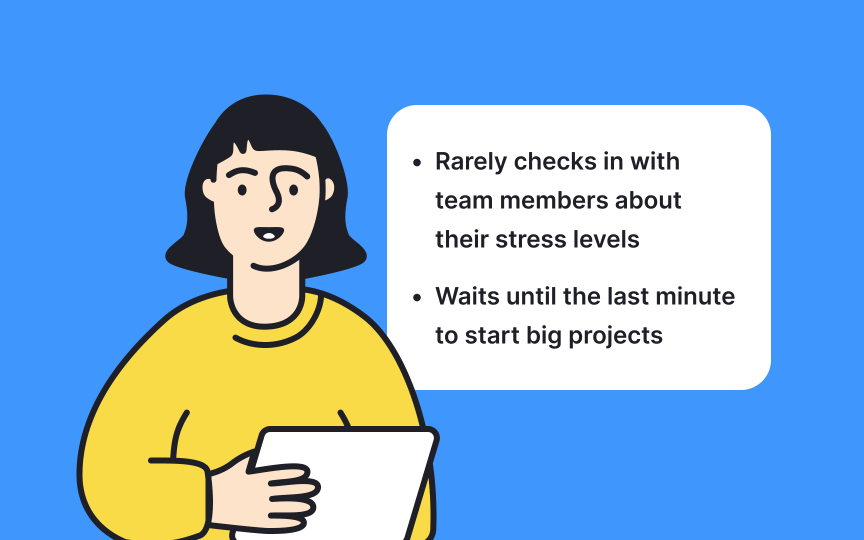Identify potential “trigger” situations
As a leader, it’s your job to identify and steer clear of "trigger" situations — those moments likely to cause team stress or conflict.
Here’s how to do it:
- Reflect on past experiences: Remember when the unexpected client feedback on the design project caused a scramble? Identifying such patterns helps anticipate future stress points.
- Know your team: If you've noticed Jordan becomes particularly stressed with tight deadlines, schedule assignments to give Jordan more lead time.
- Communicate openly: Encourage honesty. For instance, if Sara mentioned feeling overwhelmed by multitasking, adjust her workload or provide support before it becomes an issue.
- Plan proactively: If end-of-year reports stress everyone out, start compiling them gradually over the last quarter, assigning small tasks weekly to avoid the rush.
Doing this can help you create a more supportive environment, effectively minimizing potential triggers.


